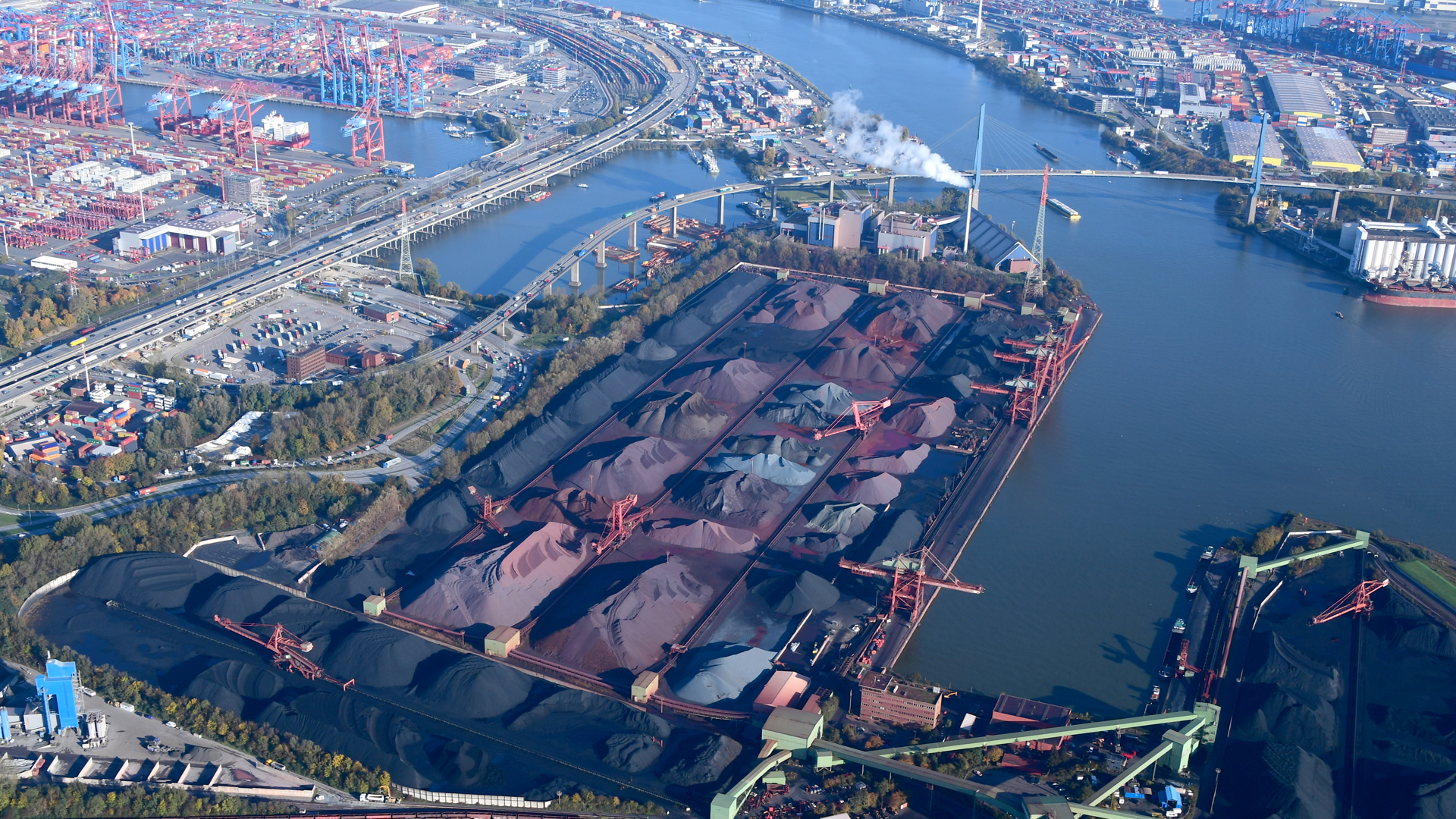Well positioned for approaching the future
For handling in the universal Port of Hamburg, bulk cargoes take second place after containers. ...

„Recycling is leading
topic in
Strategy 2030“
Bulk cargoes account for around 30 percent of the total handled in the Port of Hamburg. These consist of building materials and fertilizers, suction cargoes like wheat and feedstuffs, plus grab cargoes like coal and ore, as well as liquid cargoes consisting of oil and chemicals. Compared with container handling that accounts for 70 percent of total port volume, this segment is therefore somewhat less often in the limelight. Wrongly, for its significance should not be underestimated, among other things for the energy and raw materials supply chain as well as for trade, not just in the region but throughout Germany.
Around 36.2 million tons of bulk cargoes crossed quay walls along the Elbe last year. Suction cargoes accounted for six million tons. With 20.2 million tons, grab cargoes are generally the top category in Hamburg, while throughput of liquid cargoes totalled ten million tons. In common with other ports, throughput here was lower here on account of the war in Ukraine and the related sanctions against Russia. In addition, the Corona pandemic caused worldwide problems with supply chains.
Irrespective of these developments, the need to substitute other energy sources for coal by 2038 – and conceivably by 2030, should withdrawal be brought forward – in the bulk cargo segment the prospects are for change. The Port of Hamburg is therefore already engaged in preparing for new products and volumes: Its transformation into a cutting-edge energy hub has already commenced.
Preparations for a transformation are also in full swing at Germany’s largest handling facility for coal, ore and building materials, Hansa Terminal. With an area of around 350,000 square metres and four berths, where up to 150,000 tons are shifted around the clock daily, this is admittedly functioning almost continuously to the limits of its capacity. To ensure that this remains so, since 2016 the company has been preparing for changing clients.
“In the past six years we have been able to gain new customers offering a substitute for the dwindling volume of coal,” reports Hansaport CEO Ben Thurnwald. One example has been the extension of logistics into Austria that compensated for the lost volume.
“Circularity is a key topic for our main shareholder, Salzgitter,” says Thurnwald. Hansaport is also pursuing the resulting targets as far as it can. “Since 2017 Aurubis, for example, has been one of our new customers. Through our port facility the company has brought slags arising as a product of copper production back into the economic cycle by using them in the building materials industry and/or as blasting agents.” An initially small volume has meanwhile reached an annual one of almost 500,000 tons, growing continuously.
Through this strategy – and in pursuit of the idea of recycling – primary and secondary building materials alike will assume growing importance for the Hamburg location. “With this strategic adjustment, Hansaport is taking on the City of Hamburg’s responsibility to offer logistics solutions for major construction projects that feature water and rail as ecological carriers,” stresses the CEO.
“Owing to the geopolitical situation, just now we find ourselves compelled to supply already decommissioned power stations with coal to make essential energy available in Germany,” continued Thurnwald. The team in Altenwerder has also managed that: “Along with Hamburg Energie, one of our customers for coal, despite current demands we have been able to adapt ingoing and outgoing logistics to enable us to make available additional quantities of coal for power stations.“
Physically, switching to such new coal export countries as Colombia or South Africa presents no problems for Hansaport. Logistically, however, that’s difficult since with full utilization and more export countries, a larger number of different stores for coal, and more storage space, are required than previously. The CEO Is nevertheless confident that “We shall also surmount this challenge. Despite Corona, our team is currently doing far and away more than in ‘normal’ years.”
In parallel, Hansaport continues to prepare “to revert to our original strategy after this special situation,” and is working on plans for future utilization for this handling facility in the Port of Hamburg. For instance, interim storage of building materials is conceivable, but also of excavated soil for major Hamburg infrastructure projects – from construction of the U5 subway line to the removal of the Köhlbrand Bridge. These could equally well be bulk materials for the energy transition, from silicon for battery factories to biomass for thermal power stations. “Hansaport will also play a significant part in the bulk cargo handling field in the long-term future,” stresses Thurnwald.
Hansaport does not publish precise throughput totals. However, its CEO reveals this much: “Last year we were the incoming total was aImost 15 million tons. After the latest projection, this year we anticipate somewhat greater throughput tonnage. As I said, we are operating to the limits of our terminal’s capacity.“
With the requirement for hydrogen in Germany far outstripping domestic production capacities, construction of the infrastructure required for importing, distributing and using it is now imperative. Hamburg is set to be one of the first ports worldwide to offer such infrastructure for importing hydrogen.
In November last year, Air Products and Mabanaft, a leading independent, integrated energy company with its roots in Hamburg, were able to announce some good news. Germany’s first large import terminal for green hydrogen is to be built at the Port of Hamburg terminal of Mabanaft’s Oiltanking Deutsch-land tank storage offshoot. The aim will be to make an important contribution to supplying the Federal Republic with precious gas, probably from 2026 onwards.
The project reacts to the growing demand for clean energy, aiming to achieve climate targets; and on the other hand, to the need to achieve a broader spread of energy sources in future. Heavy investments are involved, totalling around 500 million euros for the first stage – for details, see page 28.